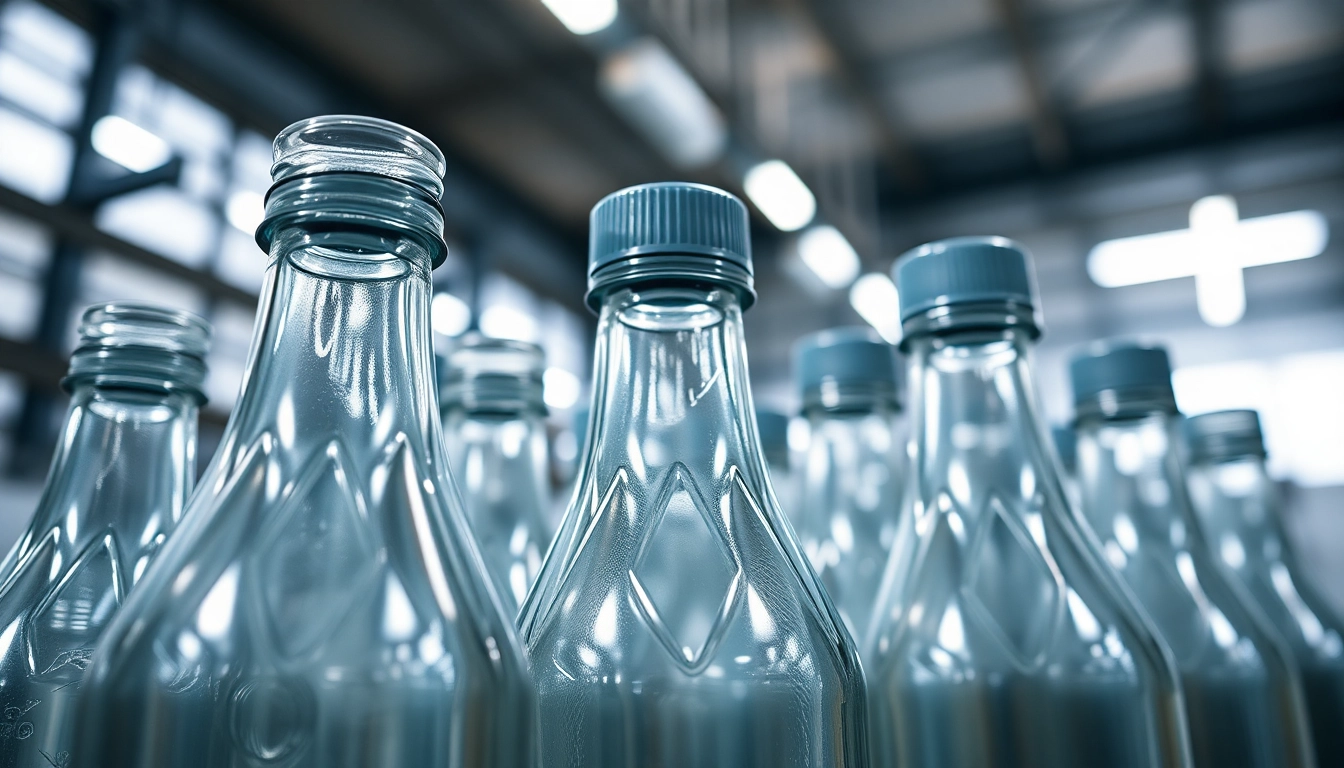Understanding Polietilen Şişe: Features and Benefits
Polietilen şişe (polyethylene bottles) have become an integral part of modern packaging solutions across various industries, from healthcare and cosmetics to food and chemicals. These bottles are widely appreciated for their versatility, durability, and cost-effectiveness. What makes polietilen şişe a preferred choice in packaging is primarily their material composition—polyethylene—which provides exceptional chemical resistance, flexibility, and safety for both manufacturers and consumers.
Polyethylene, classified under the polyethylene family, exists primarily in two types: High-Density Polyethylene (HDPE) and Low-Density Polyethylene (LDPE). HDPE, known for its strength and rigidity, is predominantly used for products requiring better durability, while LDPE offers greater flexibility, making it suitable for flexible packaging. The bottles made from these variants are inert, non-toxic, and conform to global safety standards, making them especially suitable for food-grade applications.
Selecting the Right Polietilen Şişe for Your Needs
Factors to Consider in Size, Capacity, and Thickness
Choosing the appropriate polietilen şişe involves evaluating specific factors such as size, capacity, and wall thickness. The capacity varies from small 50 ml bottles for essential oils and perfumes to large 5-liter containers for bulk chemicals and liquids. Accurate sizing ensures compatibility with filling systems and storage spaces. Wall thickness impacts the bottle’s overall strength and resistance to deformation or rupture during transportation and handling. Thicker walls provide enhanced durability but may increase production costs, so balancing cost efficiency with functional requirements is vital.
Analyzing Durability, Chemical Resistance, and Safety Standards
Durability is critical for ensuring that the bottles withstand mechanical stresses during manufacturing, shipping, and usage. Chemical resistance guarantees that the container remains inert when holding various substances, from corrosive chemicals to edible liquids. Polietilen şişe manufactured under strict quality standards adhere to food safety regulations such as FDA or EU standards. For instance, bottles used in food packaging must avoid leaching harmful substances, which is achieved through advanced manufacturing techniques and certification processes.
Best Practices for Proper Storage and Handling
Proper storage involves keeping bottles away from direct sunlight, extreme temperatures, or chemicals that might compromise material integrity. Handling procedures should minimize scratches or impacts that could weaken the structure. Additionally, storing bottles in vertical orientation prevents leakage and maintains their shape. Labeling and sealing practices further protect contents from contamination, extending product shelf life and ensuring consumer safety.
Manufacturing and Quality Standards in Polietilen Şişe Production
Key Materials and Certification Requirements
Manufacturing polietilen şişe demands high-purity raw materials that meet national and international standards. Quality certifications such as ISO 9001 (Quality Management System) and ISO 22000 (Food Safety Management) are indicators of reliable production processes. Raw materials must also comply with specific regulations, such as the FDA’s Food Contact Material standards, to ensure safety for edible products.
Innovative Techniques Enhancing Product Quality
Modern manufacturing leverages advanced extrusion and blow molding technologies, allowing precise control over bottle dimensions, wall thickness, and clarity. Incorporating anti-static, UV-blocking, or barrier layers during production enhances functionality, especially for sensitive contents like pharmaceuticals or perishables. Implementation of robotic automation improves consistency and reduces defect rates, leading to higher customer satisfaction.
How to Verify Authenticity and Reliable Supplier Credentials
Verifying suppliers involves requesting certificates of compliance, production capacity data, and quality assurance protocols. Trusted manufacturers display certifications prominently and provide references or case studies of their clients. Visiting manufacturing facilities or requesting samples for testing can also ensure product authenticity. Maintaining long-term relationships with certified suppliers guarantees a steady supply of high-quality polietilen şişe tailored to your requirements.
Cost Optimization and Supplier Selection Strategies
Understanding Price Factors and Bulk Purchase Benefits
The cost of polietilen şişe is influenced by raw material prices, manufacturing volume, complexity of design, and certification standards. Bulk purchasing typically offers significant discounts, reducing per-unit costs and improving profit margins. Investing in larger order quantities, while managing inventory efficiently, enables companies to benefit from economies of scale.
Building Long-Term Partnerships with Trusted Manufacturers
Developing strategic relationships with reputable producers can lead to priority production schedules, customized designs, and flexible payment terms. Long-term partnerships also facilitate collaborative innovation and shared quality control initiatives, ensuring consistent product performance and supply stability.
Logistics and Delivery Considerations for Business Continuity
Efficient logistics involve selecting suppliers with reliable delivery records, flexible shipping options, and comprehensive tracking systems. Properly coordinated supply chains minimize delays and stockouts, contributing to smooth production workflows. Evaluating proximity or establishing regional warehouses can further optimize distribution and reduce transportation costs.
Future Trends and Innovations in Polietilen Şişe Industry
Emerging Eco-Friendly Materials and Sustainable Practices
The industry is increasingly embracing sustainability through biodegradable plastics, recycled materials, and eco-design principles. Innovations like bio-based polyethylene derived from renewable resources aim to reduce environmental impact. Companies are also adopting circular economy models by encouraging recycling and reusing bottles, which aligns with global environmental objectives.
Technological Advances Improving Product Performance
Recent developments include barrier-layer technologies that extend shelf life, smart labels with QR codes for traceability, and lightweighting techniques to reduce plastic usage without sacrificing strength. Incorporating antimicrobial additives in manufacturing further enhances the safety and hygiene of bottles used in sensitive sectors like healthcare.
Regulatory Developments and Industry Standards Evolution
Evolving legislation emphasizes stricter safety and environmental standards. Regulations such as the European Union’s Single-Use Plastic Directive or the US FDA guidelines for food contact materials necessitate continuous innovation and compliance. Manufacturers must stay ahead of these changes to maintain market access and consumer trust.
